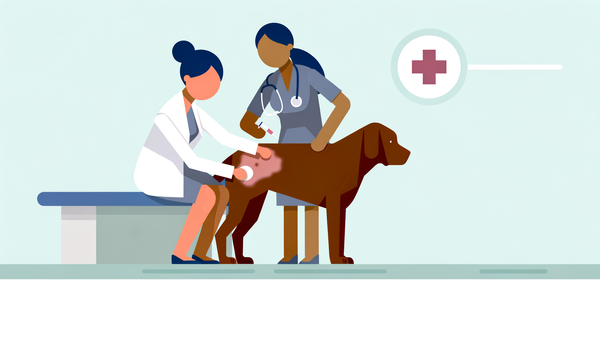What are the different types of lumps and bumps in pets?

Understanding the Nature of Lumps and Bumps in Pets
Finding a lump or bump on your pet can be worrying, but understanding these growths is essential for their health. Let's delve into the various types of skin abnormalities observed in pets, particularly dogs, evidenced by authoritative sources like the MSD Veterinary Manual.
Types of Lumps and Bumps
Tumors of the Skin
Skin tumors are frequently diagnosed in pets due to their visibility and the skin's exposure to various tumor-inducing factors such as chemicals, solar radiation, and viruses. Tumors can be:
- Benign: Non-invasive, don't spread, and are easier to remove surgically.
- Malignant: Invasive, spread to other body parts (metastasis), requiring aggressive treatment.
Common Skin Tumors
- Basal Cell Tumors and Carcinomas:
- Tumors: Generally benign, appearing as dome-shaped masses, often hairless or ulcerated.
- Carcinomas: Less common but malignant, spreading locally.
- Collagenous Nevi:
- Benign tumors composed of fibrous proteins, commonly seen on the legs, head, and neck.
- Fibromas:
- Resemble collagenous nevi, occurring in older dogs, primarily on the head and legs.
- Hemangiomas:
- Benign blood vessel tumors that can develop ulcers and grow large.
- Hemangiopericytomas:
- Firm tumors found on the lower legs and chest, invasive but rarely metastasizing.
- Cutaneous Angiosarcomas:
- Malignant blood vessel tumors, often caused by sun exposure in certain dog breeds.
- Mast Cell Tumors:
- The most common malignant tumor in dogs, varying in aggressiveness and requiring careful treatment.
- Melanomas:
- Can be benign or malignant, often appearing on the lips, mouth, or nail beds.
- Perianal Gland Tumors:
- Found near the anus, more common in male dogs, and treated often by castration.
- Sebaceous Gland Tumors:
- Common, varying from benign cysts to malignant adenocarcinomas.
Diagnosis and Treatment
Diagnosing skin tumors often involves:
- Fine Needle Aspiration or Biopsy: Determining if the tumor is benign or malignant.
- Surgical Removal: Often the most effective treatment, especially if the tumor is malignant.
- Histopathology Tests: Confirming if all tumor cells were removed during surgery.
Additional Diagnostic Methods
- Skin Scrapings: For identifying mites or fungal infections.
- Cytology: Examining skin cells for bacterial, fungal, or neoplastic diseases.
- Blood and Urine Tests: Identifying underlying systemic diseases.
Conclusion
While finding a lump or bump on your pet is concerning, knowing the types and appropriate steps for diagnosis and treatment helps in providing the best care. Always consult your veterinarian to analyze and treat any growth on your pet's skin, ensuring they receive proper medical attention.
For detailed reading, visit MSD Veterinary Manual - Tumors of the Skin in Dogs and MSD Veterinary Manual - Diagnosis of Skin Diseases in Animals.



